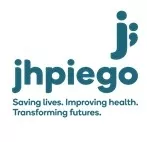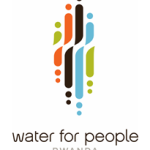Jhpiego creates and delivers transformative health care solutions that save lives. In partnership with national governments, health experts and local communities, Jhpiego builds health providers’ skills and develops systems that save lives now and guarantee healthier futures for women and their families.
Website: http://www.jhpiego.org
REQUEST FOR QUOTATION _ STRENGTHENING EMERGENCY MEDICAL SERVICES (EMS) TO IMPROVE MATERNAL & CHILD HEALTH IN RWANDA
Jhpiego’s Mission
Jhpiego enhances the health and saves the lives of women and families in limited-resource settings. For nearly four decades, we have put evidence-based health innovations into everyday practice to overcome barriers to high-quality health care services for the world’s most vulnerable populations. From our origins as technical experts in reproductive, maternal and child health, Jhpiego has grown to embrace new challenges, including HIV/AIDS, malaria and cervical cancer prevention — reflecting the increasing interconnectedness of global health.
Jhpiego’s Values
At Jhpiego, we value our customers who have our respect, responsiveness, and commitment to excellence; our staff and global network of colleagues who bring cultural diversity, innovation, and a wealth of world experience; and our work culture, which is reflected in our team spirit, transparent communication, mutual respect, flexibility, and dedication.
INTRODUCTION
In the field of Emergency medical services, coordinated response is a strong factor for overall better health outcomes. Most deaths related to maternal, child, and neonatal health emergencies can be prevented through rapid and efficient response. Emergency Medical Services in Rwanda still struggles with proper digital ambulance monitoring and immediate dispatching systems to respond to maternal, child, and neonatal health emergencies across the country.
The Ministry of Health acknowledges the importance of equipping all ambulances with advanced fleet management systems to enable seamless coordination and dispatch. This initiative is essential for boosting ambulance performance and enhancing the delivery of emergency medical services. This document provides a detailed overview of the fleet management system, outlining its components, usage, and impact on improving maternal, child, and neonatal health outcomes.
CONTENTS OF AMBULANCE FLEET MANAGEMENT SYSTEM
- Trucking platform
The trucking platform is a web and phone-based platform that enables remote control of ambulances
country wide. Up to now, the platform has 246 registered ambulances countrywide. The platform provides detailed information on each ambulance including location, working status (on road or static), and ambulance trajectory among others. The platform can generate reports on ambulance activities automatically as spreadsheets which ease data management.
- GPS tracker
The fleet management system consists of a GPS tracker. With this GPS tracker, the movement of the ambulance is very well monitored to ensure that there is no misuse of ambulance in other businesses which may ultimately lead to delay to attend all Maternal, child and neonatal emergencies. With this tracker, the trucking platform user is able to know the status of all ambulances near any site of emergency and henceforth ease in dispatching.
- Alcohol sensor
According to past reports, most of the accidents that resulted in fatality were associated with drunk driving. The fleet management has an alcohol sensor installed on the wheel drive, with this sensor whenever a driver has a high level of alcohol the car cannot be turned on hence completely eradicating all accidents that could put at risk maternal, child and neonatal patients on board.
- Over speeding alarm
Over speeding has been consistently reported among the causes of ambulance accidents which not only destroy ambulance as a vehicle, but also take the lives of drivers, mothers and children carried by the ambulance. Now all ambulances in Rwanda has a limit of 80 km/h and whenever this speed is exceeded, the alarm notifies the driver and the trucking platform user for appropriate action.
- Telemedicine platform
Telemedicine capability is installed in the ambulance and gives capability to ambulance personnel to interact with medical doctors at hospital facility to gain remote support on management of maternal, child and neonatal emergencies.
- Vehicle remote cutoff
The fleet management system has a remote vehicle cut off. Anytime a violation happens being over speeding, alcohol usage or any other inappropriate activity recorded on the camera, the trucking system operator has the option to turn off the ambulance and notify the driver for immediate and appropriate action to ensure everyone’s safety being the driver, paramedical team and the Mother and Child.
- Instruction to Bid
- Trade license of the similar works
- Valid RRA Tax Clearance Certificate
- Detailed company profile,
- Your quotation should remain valid for 30 calendar days from the date of submission.
- Indicate the Delivery Period
- At least three (3) good completion certificate for similar works
Please submit your signed and stamped quotation in a sealed envelope not later than Friday, 13/09/2024, 10:00 AM, local time. Indicate on the envelope: Ambulance Fleet Management System to Strengthen EMS for Improved MCH Outcomes. Address your quotation to the Finance and Operations Director at JHPIEGO, Gasabo, Kacyiru, KG 563 ST ROAD, Golf View Rise Building, 3rd Floor. Tel: 0788381188.
For any inquiry, Please submit through, Rwanda.Procurement@jhpiego.org in at least 2 days before the bids submission deadline.
Done on 9th, September 2024
Laurence Mukanyindo
Finance& Operations Director





